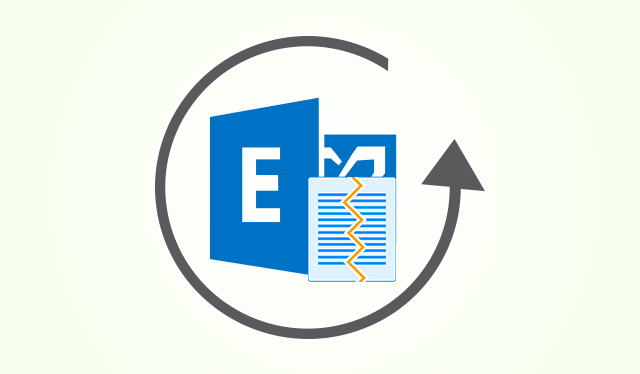Detailed Guide On MS Exchange Server 2010 Disaster Recovery


Microsoft Exchange server plays a vital role in huge organizations, increasing the responsibility of Microsoft to enhance its security and features. Administrators have been tracked with a major overhaul in the Exchange server, which comes along with DAG. The database availability groups or DAG is an accurate approach for overcoming cluster continuous replication and standby continuous replication limitations in Exchange 2007. Therefore it is important to have MS Exchange Server 2010 disaster recovery place to prevent data.
Introduction to Exchange DAG
A recent system of the server has completely meshed failback/failover environment. There are a hundred databases running on each server license in the Exchange 2010 and at the database level, Database failover is carried away. It is an assumption that there are two locations i.e., Site A and Site B for detailing activities from different geographical locations. Since 100 databases can be hosted by the Exchange server, we imagine that Site A/Server 1 might be having 10 databases out of which 5 DBs are failover to the SiteA/Server2 and 5 databases failover to the Site B/Server 3. This type of operation in the server ensures failback and failover in the WAN within 30-60 seconds.
Prerequisites to Use Database Availability Group
Administrators need to consider following points when they are deciding to create DAG in Exchange 2010:
- The hardware configuration must support recent system load and future load when it is acting like a master replica of a mailbox database.
- The names of mailboxes should be distinct from each other.
- TCP/IP should be reserved in advance for supporting current as well as future cluster requirements.
- After configuration, test failover and failback mechanisms should be finalized. Continuously monitoring of DAG notes copy is mandatory for administrators to be updated with their health status.
- Avoid the unwanted failover by disabling the power management at cluster nodes. This should be performed both in motherboard BIOS as well as in the power applet of Control Panel.
- Execute the additional network adapter in the database availability group for Windows cluster support.
Learn the Use of Exchange Server 2010 Disaster Recovery
A disaster recovery strategy is originated with the DAG establishment. Go through the following set of instructions for the creation of DAG in the Exchange 2010 server and implement them:
- Perform the server configuration with Windows 2008 SP2 or further operating system. Install the Exchange server 2010 with mailbox server role.
- Open Exchange Management Console screen and expand the menu of Organization Configuration from the left-hand side of the panel.
- Click on Mailbox >> Mailbox Availability Group tab from the center
- Move the cursor towards the right-hand side of the screen and click on ‘New Database availability group’ option. Provide a different name to this DAG that follows with the naming convention, ‘the File witness’ location, and directory. Click on the New button
- The procedure gets completed on the current wizard where you have to click on Finish button of creating DAG in Exchange 2010
Finally, you are done with the creation of database administrators. Now it is the time to add members in the newly created DAG with help of following guidelines :
- Open Exchange Management Console on your screen and expand the menu of Organization Configuration
- Click on the Mailbox >> Database Availability Group tab
- Right-click on the Exchange 2010 DAG in which members are to be added and choose Manage Database Availability Group Membership
- Click on Add on the current screen and select the mailbox server, which you desire to join to DAG.
- Click on Manage and then Finish when you are done with the addition of essential nodes.
At this stage, your system is ready for the configuration process.
- Expand the menu of ‘Organization Configuration’ in EMC and click on Mailbox >> Database Availability Group tab
- Right-click on the database that is to be replicated within DAG
- Choose the Add Mailbox Database copy and locate for the server in Exchange DAG where replication needs to be executed.
- Select the Truncation lag time and Replay lag time
- Enter the name of preferred list sequence number and click on Add
- When the procedure gets completed, click on Finish button
A database replica gets created and now administrators can repeat the above-mentioned guidelines to create as much copy of the database as they want.
Note: If any disaster or catastrophe strikes, the entire Microsoft Exchange Server will crash. There are various ways to repair and export Exchange database by using the reliable tool. One such software is SysTools Exchange Server Recovery Software that easily repair corrupt Exchange mailbox & recover mailbox from Exchange database file. This recovery manager for Exchange database tool support public folder along with private mailboxes. Along with priv.edb file the software can repair Exchange public folder database with no data loss and export the recovered mailboxes directly to the Live Exchange 2016, 2013, 2010, 2007, 2003 mailboxes, Office 365 and various file formats.
Conclusion
Microsoft never avoids the problem of its customers and tries to resolve them timely. Time-to-time update in the Exchange server makes it easy for administrators to manage things without any complications. Exchange Server 2010 disaster recovery is one such example. This solution enables administrators to create the replica of Exchange databases through the inbuilt options available in the server.
